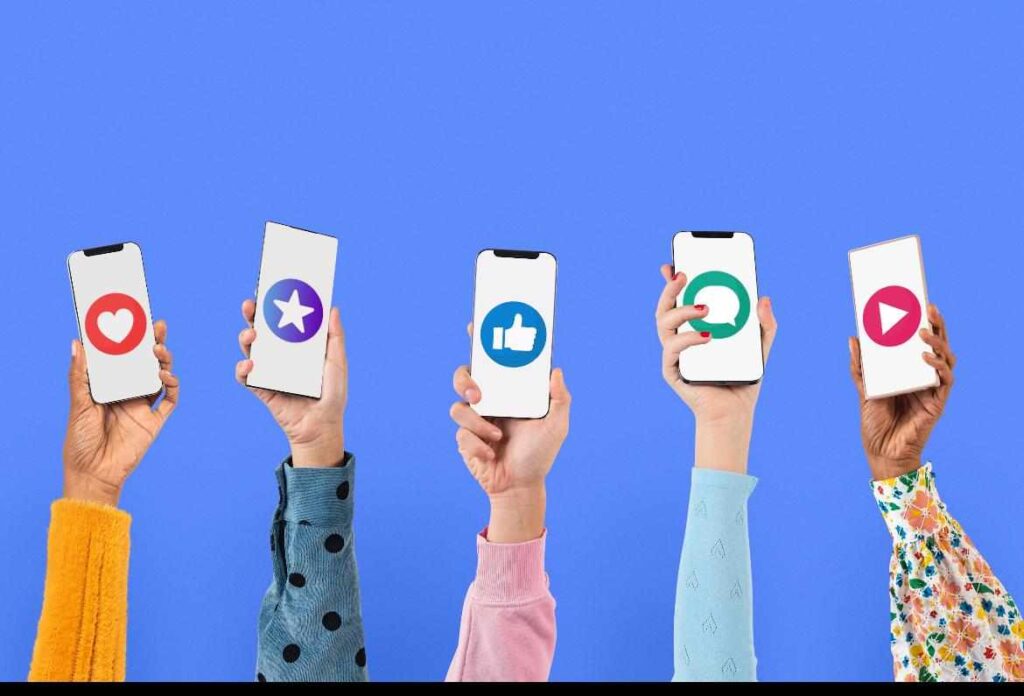The Rise of Digital Media: Changing How We Communicate in the 2000’s:
Digital media has caused a revolution in how people talk to each other and use media in recent times. In the last 20 to 30 years, new digital tech has changed how we make, share, and take in information. From when the internet began to when social media got big, digital media now touches every part of society. It has an impact on politics, culture, business, and how people talk to each other. This article looks at how digital media grew, its big moments, and how it affects life today.
The ascent of digital media and its effects:

The computer and the internet originated in the late 1900s, and beginning with these two technologies gave rise to digital media. In 1993, there were roughly six hundred total websites. During the last ten years of construction, that number has increased to more than $17 million. . By 2023, there will be nearly 1.13 billion websites. According to live internet statistics, the rapid spread of websites reflects the shift from traditional media such as newspapers, television, and radio to online platforms.
The Integration of the New Digital Media and the Old Traditional Media New media technologies have affected traditional media industries in many ways, especially in the wake of the information age. Of all the old media, newspapers, television, and radio have experienced a lot of pressure in the current society. In particular, there has been a decline in the circulation of printed media information. Pew Research Center shows that in 1990, the number of newspapers circulated in America was 62 million, but in 2020 it is 24.3 million, which shows a decline of over 60%. The role of television has also been threatened by digital platforms. Companies like Netflix, Hulu, and Disney+ have completely changed the standards of watching movies and shows. Nielsen reported that in the United States, streaming claimed 28% of people’s total TV usage in 2021, making it more popular than broadcast at 24% and cable usage at 39%. Furthermore, the emergence of digital advertisements has supplanted conventional advertisements. Worldwide digital advertisement spending was $567 billion in 2022 and represented more than 60% of total advertisement spending. This supports the conclusion that although total U.S. television spending is the largest at 34% while traditional television spending is at 22%, money is sending an important message about where businesses spend their advertisement money.
In the 2000s, social media created an entirely new expansion in virtual media, with Facebook (2004), YouTube (2005), and Twitter (2006) changing the way individuals share and consume content. Social media offered customers the chance to become breeders and, in effect, became the seventh and final customer.
To enable this inclusive lifestyle, the concept of “Web 2.0” has been designed to describe this new web. Get serious about using consumer-generated content. Social interaction and community growth promote cooperation and sharing across the mountain.
The Role of Mobile Devices
An important contribution to the growth of digital media has been smartphones. According to Statista, in 2023 there were 6.92 billion people globally using a smartphone, or 86% of all people on the planet. Smartphones are the norm for accessing one’s data and, in most cases, are the primary access device to the internet.
Cell phone applications have also become something of an incentive for digital media. Now one can log into streaming services, check on news apps, play games, and more, in many cases literally at one’s fingertips. Digital media consumption has never been easier than that. App Annie claimed the average mobile user spent more than 4 hours a day on their smartphone in 2021, demonstrating how central these devices have become to our lives.
Challenges and opportunities faced by the digital media landscape.
Of course, while there are many advantages to digital and social media, one need not think very long nor hard to find the challenges associated with them. Fake and fabricated news, which is a major problem for spreading in social media networks. A study from MIT Media Lab finds that false news stories are 70% more likely to be retweeted than ones based on the truth, and it takes true stories about six times as long to reach 1500 people on Twitter via Recode. And that is the problem with doing fact-checking today.
Another reason to expose the privacy questions is the concern for storing and personalizing user raw data by digital platforms. The 2018 Cambridge Analytica scandal, in which the data of millions of Facebook users was held without their knowledge.
Despite the challenges described above, digital media also offers broader opportunities, for example, podcasts, which currently have more than 50 million episodes and 70 million episodes globally by 2023, as Podcast Insights points out. This field is open to new possibilities. In terms of creativity and consumption, virtual reality (VR) and augmented reality (AR) are transforming digital media with their ability to provide immersive experiences beyond traditional media formats.
Conclusion:
The advance of digital media has utterly changed the nature of communication, consumption of content, and relating with others in society. Gone is the myopic little world where booming social media growth would take up some of the users who were exiting traditional media. Digital media has great potential for sharing knowledge and brings us closer, even if some problems around fake news and privacy are already obvious.




